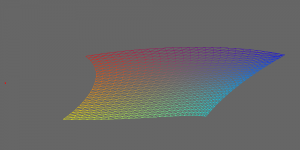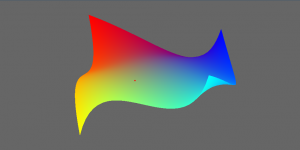Recently, I wanted to setup a chroot environment to build a 32bit library on 64bit host platform. After failing several times trying different things, reading man pages and scouring the web for a solution, I did not find what I was looking for. So, I decided to make this post. Here is what I came up with.
Components:
- debootstrap
- schroot
Assumptions:
- Ubuntu Trusty 64bit host
- Ubuntu Trusty 32bit target
- Target directory /opt/chroot/trusty-i386/
- You know what you’re doing
TLDR:
Install debootstrap and schroot:
# apt-get install debootstrap schroot
Replace your-user-name with the name of your user in the following and put it in /etc/schroot/schroot.conf:
[trusty] description=Trusty Tahr (i386) directory=/opt/chroot/trusty-i386 users=your-user-name root-groups=root preserve-environment=true personality=linux32
Run these commands (once) to setup the environment:
# export target_dir="/opt/chroot/trusty-i386" # apt-get install debootstrap schroot # debootstrap --include=apt,apt-utils,sudo,dialog --variant=buildd --foreign --arch i386 trusty "$target_dir" http://archive.ubuntu.com/ubuntu/ # chroot "$target_dir" debootstrap/debootstrap --second-stage # bash -c "echo \"chroot\" > \"$target_dir\"/etc/debian_chroot" # bash -c "echo \"deb http://us.archive.ubuntu.com/ubuntu/ trusty main restricted universe multiverse\" >> \"$target_dir\"/etc/apt/sources.list" # bash -c "echo \"deb-src http://us.archive.ubuntu.com/ubuntu/ trusty main restricted universe multiverse\" >> \"$target_dir\"/etc/apt/sources.list" # chroot "$target_dir" apt-get update # chroot "$target_dir" locale-gen $LANG
Use this script to enter the chroot (run as user):
#!/bin/bash target_dir="/opt/chroot/trusty-i386" sudo mount -o bind /proc "$target_dir"/proc/ sudo mount -o bind /sys "$target_dir"/sys sudo mount -o bind /dev "$target_dir"/dev sudo mount -o bind /dev/pts "$target_dir"/dev/pts sudo mount -o bind /home "$target_dir"/home sudo cp /etc/resolv.conf "$target_dir"/etc/resolv.conf sudo cp /etc/hosts "$target_dir"/etc/hosts sudo cp /etc/passwd "$target_dir"/etc/passwd sudo cp /etc/shadow "$target_dir"/etc/shadow sudo cp /etc/group "$target_dir"/etc/group sudo cp /etc/services "$target_dir"/etc/services sudo cp /etc/protocols "$target_dir"/etc/protocols sudo cp /etc/networks "$target_dir"/etc/networks schroot -c trusty sudo umount "$target_dir"/proc/ "$target_dir"/sys/ "$target_dir"/dev/pts "$target_dir"/dev/ "$target_dir"/home
To remove the chroot environment completely:
rm -rf /opt/chroot/trusty-i386/*
Notes:
Using schroot is optional, you should be able use the environment ‘normally’ with chroot. I’m not sure why the files in /etc/schroot/default/ are seemingly unused, possibly something to do with a missing schroot config script. The debootstrap program completes leaving /etc/apt/sources.list* empty, perhaps something to do with debian bug #736995, so we populate the sources.list file manually. You may add additional packages you want installed to the –include line. Running debootstrap with –second-stage in the chroot installs these additional packages amongst other things. We also create /etc/debian_chroot with the contents “chroot” so the command prompt is prefixed with “(chroot)”, making it clear that it’s not running the host shell. Installing apt-utils and running locale-gen isn’t particularly necessary but at least it gets rid of some annoying messages when running certain dpkg related commands. The script shown mounts the important directories and copies relevant files needed to chroot into a working environment. One caveat is that it might ask for password after exit for umount. Optionally, corresponding fstab entries could be made and copy the relevant files once, so only the schroot command would be needed. This should be enough to login as your user with access to $HOME and to build and run applications, including X11 apps. Cheers.


